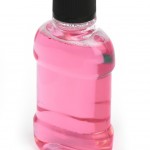
The antiseptic agent Chlorhexidine (CHX) has been widely use to control plaque and gingivitis. The aim of this review was to evaluate, the efficacy of a CHX mouthrinse against plaque growth, gingival inflammation and stain formation in gingivitis patients.
What did they do
The Medline-PubMed, Embase and the Cochrane Central Register of Controlled Trials databases were searched for randomised controlled clinical trials (RCTs) with a minimum follow up of 4 weeks. Only English language papers were considered. Papers were independently screened and data abstracted by two reviewers. Primary outcomes were plaque and gingival inflammation. Staining was assessed as one of the adverse effects. A descriptive manner of data presentation was used for all studies. When possible, a quantitative analysis of the data and subsequent metaanalysis were performed.
What did they find
- 30 studies met the inclusion criteria , author estimated risk of bias was considered was low in 9 studies, moderate in 10 studies and high for 11 studies.
- Meta-analysis showed significant Weighted Mean Differences (WMD) favouring CHX.
[table id=28 /]
- When only the low risk studies were included the WMD for Quigley & Hein plaque index and gingival index were in favour of CHX.
- -0.68[95%CI:-0.85;-0.51] for Quigley & Hein
- -0.24[95%CI:-0.29;-0.20] for Gingival Index
- Relative to control, the reduction with CHX for plaque was 33% and for gingivitis 26%.
- There was significantly more staining in the CHX rinsing groups.
The authors concluded
In gingivitis patients, CHX mouthrinses together with OH versus placebo- or control mouthrinse provide significant reductions in plaque and gingivitis scores, but a significant increase in staining score.
Van Strydonck D.A.C, Slot D.E, Van der Velden U.,Van der Weijden G.A. The effect of a chlorhexidine mouthrinse on plaque, gingival inflammation and staining in gingivitis patients: A systematic review. J of Clinical Periodontology . ‘Accepted Article’, doi: 10.1111/j.1600-051X.2012.01883.x
Comment
While the authors have conducted a good search involving 3 databases the fact they have only included English language studies means it is likely that they will have missed some studies given the fact that Chlorhexidine is in widespread use.able. They note that if they had included one of the Cochrane Collaboration’s quality criteria ( allocation concealment) that only 5 studies would retain their author allocated quality assessment with all the remainder being downgraded. There is some discussion of the CHX concentrations used as range of commercial concentrations are available (0.12%, 0.1%, 0,05%,0.06%). As the authors note, a 2010 review by Bercher et al suggested a small but statistically significant difference between the two CHX concentrations 0.12% and a 0.2%.
Berchier CE, Slot DE, Van der Weijden GA. The efficacy of 0.12% chlorhexidine mouthrinse compared with 0.2% on plaque accumulation and periodontal parameters: a systematic review. J Clin Periodontol. 2010 Sep;37(9):829-39. Epub 2010 Jul 7. Review. PubMed PMID: 20618550.
Other than staining which is the most commonly reported side effect there is limited information regarding side effects. While hypersensitivity is raised it is worth noting that there have been rare cases of anaphylaxis related to chlorhexidine use. A 2004 review by Beaudouin et al reported 50 cases worldwide, with more than twenty cases reported in the liteature since.
Beaudouin E, Kanny G, Morisset M, Renaudin JM, Mertes M, Laxenaire MC, Mouton C, Jacson F, Moneret-Vautrin DA. Immediate hypersensitivity to chlorhexidine: literature review. Eur Ann Allergy Clin Immunol. 2004 Apr;36(4):123-6. Review. PubMed PMID: 15180352.
There are currently two Cochrane reviews underway related to this review and both protocols are available on the Cochrane Library.
Bailey D, Adams G, Marinho VCC, Tsao C, Hyslop A, Morgan M. Chlorhexidine interventions for the prevention of caries in adults (Protocol). Cochrane Database of Systematic Reviews 2009, Issue 3. Art. No.: CD007856. DOI: 10.1002/14651858.CD007856.
James P, Parnell C, Harding M, Whelton H, Worthington HV, Beirne PV. Chlorhexidine mouthrinse as an adjunctive treatment for gingival health (Protocol). Cochrane Database of Systematic Reviews 2010, Issue 9. Art. No.: CD008676. DOI: 10.1002/14651858.CD008676.

[…] which kill some of the bacteria your toothbrush misses, and help freshen the breath. But while there is some evidence that such mouthwashes can reduce plaque and gum inflammation, Richards says: “If you’re brushing your teeth twice or three times a day with a fluoride […]
[…] which kill some of the bacteria your toothbrush misses, and help freshen the breath. But while there is some evidence that such mouthwashes can reduce plaque and gum inflammation, Richards says: “If you’re brushing your teeth twice or three times a day with a fluoride […]
[…] which kill some of the bacteria your toothbrush misses, and help freshen the breath. But while there is some evidence that such mouthwashes can reduce plaque and gum inflammation, Richards says: “If you’re brushing your teeth twice or three times a day with a […]